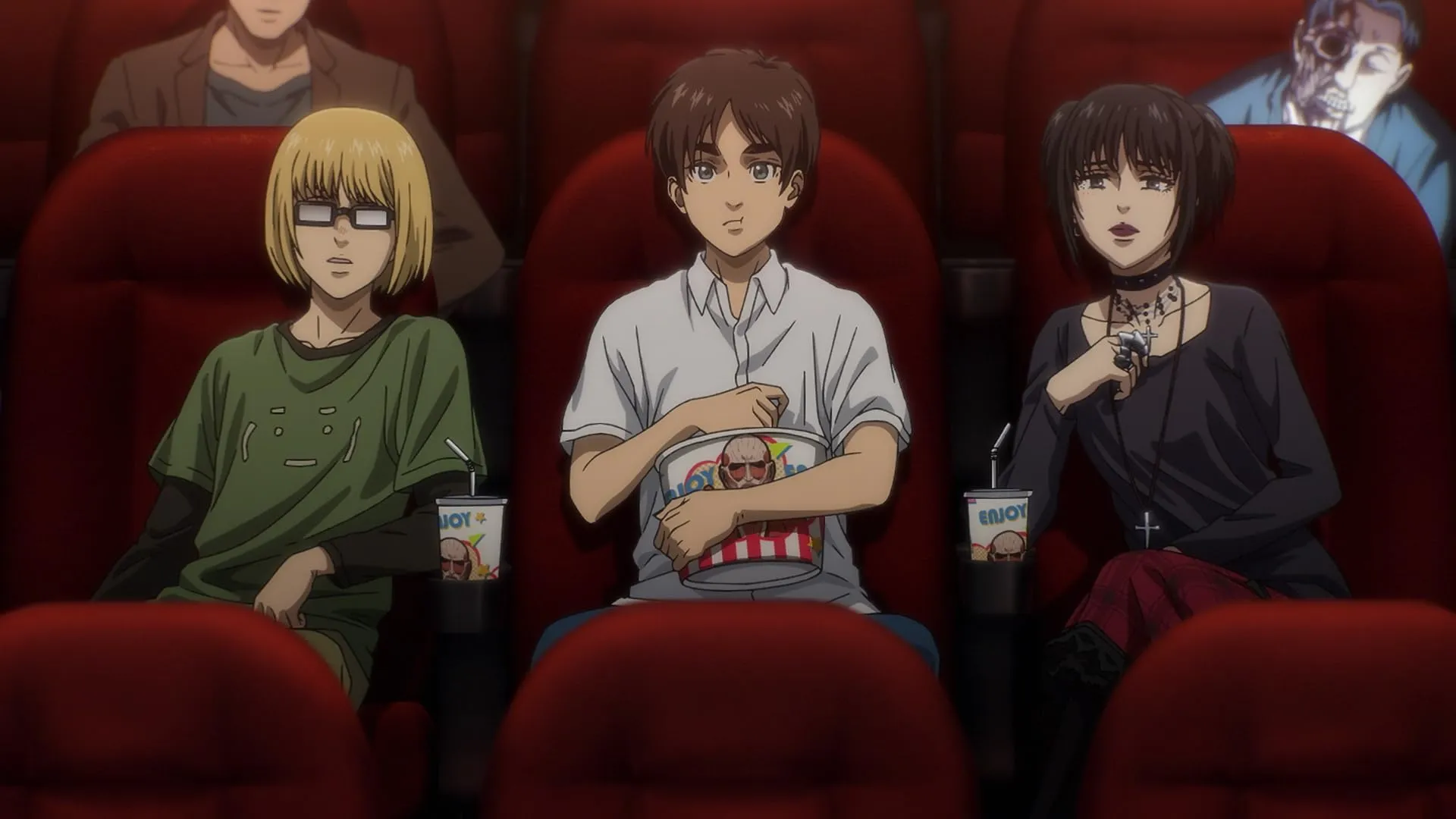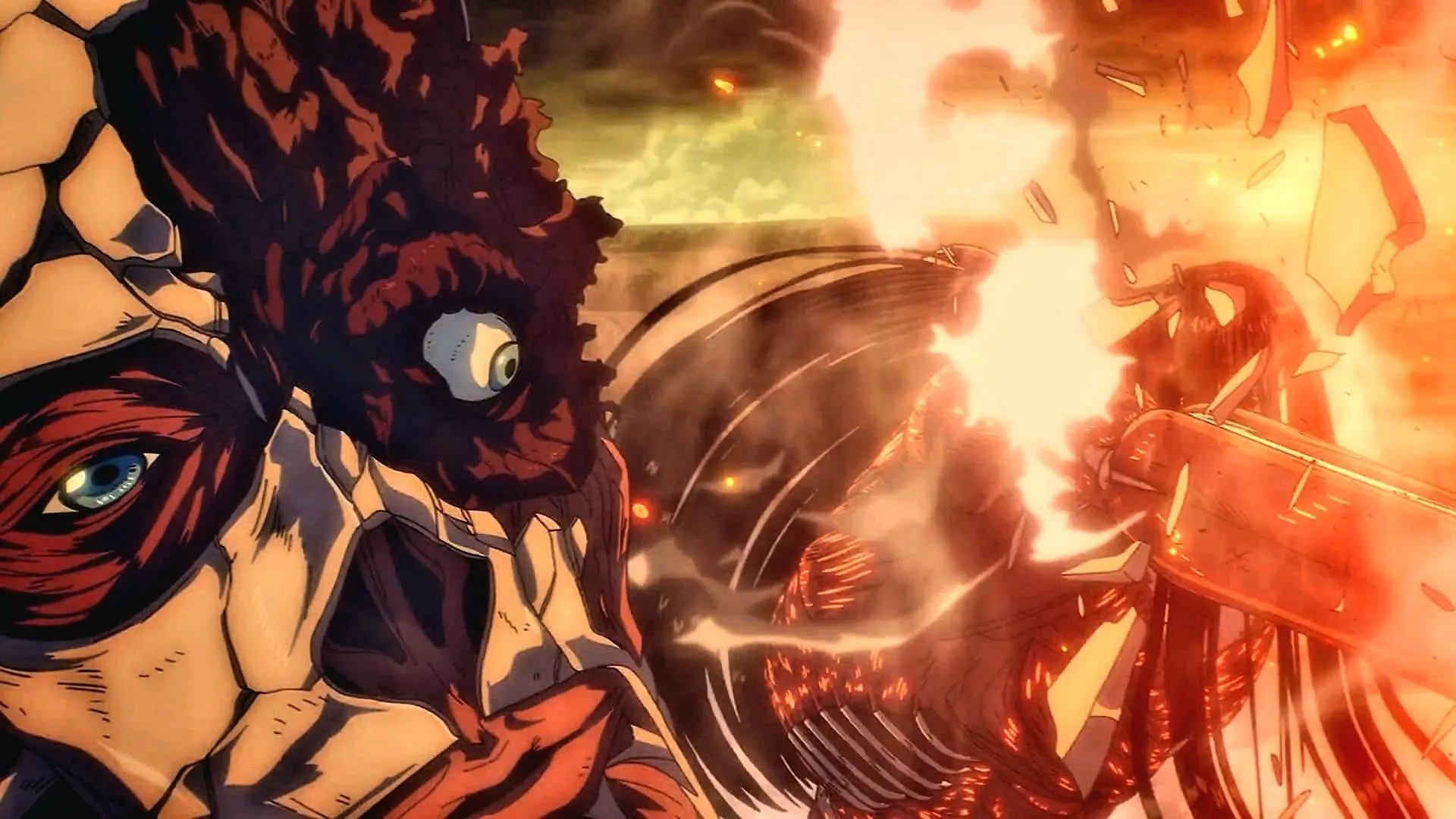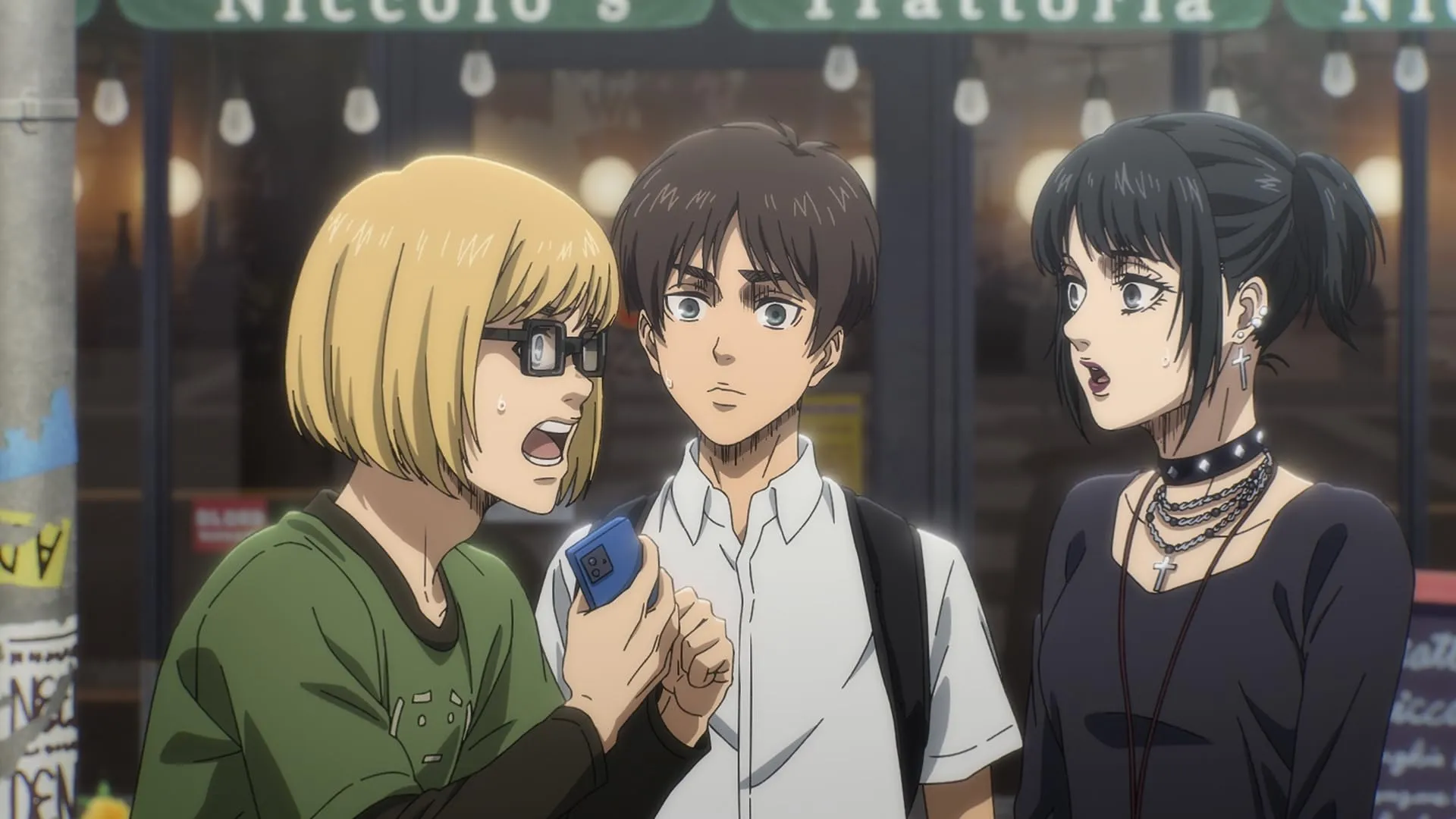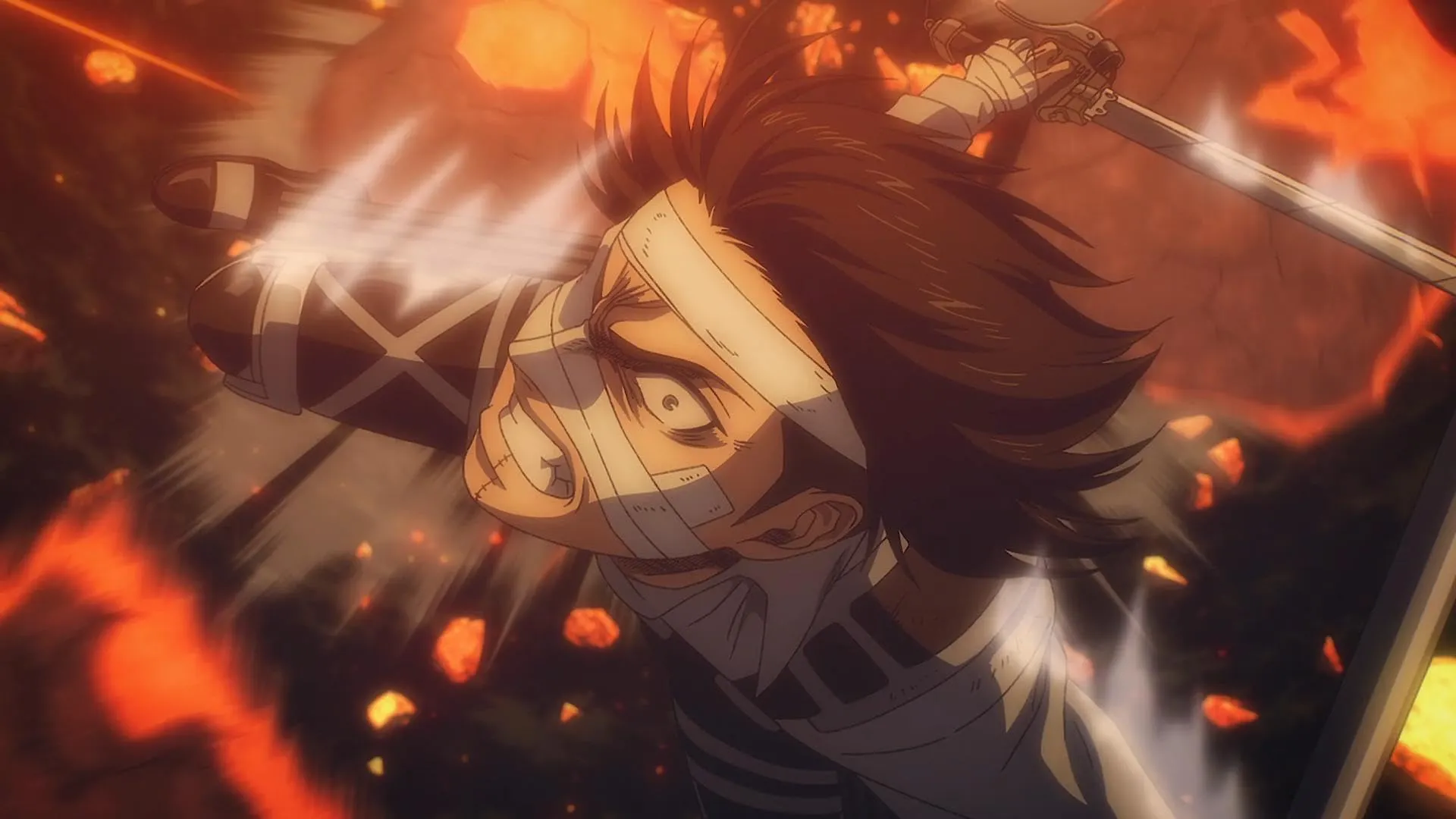Attack on Titan stands as a monumental cultural phenomenon. Created by Hajime Isayama, the series emerged from its origins in the manga into an expansive narrative that captured audiences with stark portrayals of conflict and human resilience. Its visual imagery and thematic boldness influenced a generation of storytellers and animators, leaving an indelible imprint on modern entertainment.
The Last Attack presents the final movement of this saga, reassembling the final episodes into a cinematic experience that intensifies the narrative. The film issues a resonant farewell to characters whose struggles and sacrifices have defined the work.
A shift in artistic leadership from Wit Studio to MAPPA ushers in fresh creative impulses while preserving a link to the series’ established roots. Key figures in direction, script creation, design, and music orchestrate a presentation marked by both precision and expansiveness.
The cinematic format accommodates an extended structure, incorporating a surprising post-credits segment that reconfigures expectations. This omnibus style condenses elaborate storytelling into a theatrical experience that upholds the emotional and narrative integrity of the original work. This film encapsulates the legacy of a storied saga that challenged conventional storytelling, merging intense narrative drama with powerful visual artistry. The artistic shift redefines the franchise for future discourse.
The Final Act: A Confluence of Chaos and Order
A singular narrative pulse animates this cinematic installment, centering on Eren’s audacious stratagem that sets a cataclysm into motion. The film charts his decision to trigger a force known as The Rumbling—a devastating mobilization that disrupts the fragile equilibrium of a society already steeped in conflict.
This radical maneuver instigates a clash of ideologies between a man pursuing his vision at any cost and those who once shared his aspirations. The ensuing confrontation pits fervent ambition against lingering loyalty, forging a dramatic arena where stakes escalate with every passing moment.
The adaptation of the final episodes into a cohesive feature-length presentation demonstrates a careful orchestration of narrative fragments. The reassembled episodes form a continuous story where energetic combat sequences intersect with quieter, reflective passages.
The pacing, meticulously arranged, sustains an intensity that mirrors the frenetic chaos of battle while affording intervals of measured stillness. This rhythm transforms episodic material into an experience that unfolds with both urgency and deliberation, reinforcing the gravity of each decision made on-screen.
A striking narrative pivot emerges with the inclusion of a post-credits sequence—a calculated interlude that repositions the viewer’s understanding of the unfolding events. This unexpected addition challenges preconceived notions and encourages a reexamination of earlier plot developments without offering overt explanations. The effect is a narrative twist that reshapes the arc of the story, inviting a reconsideration of motives and outcomes established in previous scenes.
The film’s approach to storytelling employs an artful balance of foreshadowing and measured exposition. Multiple narrative threads interlace seamlessly despite the constraints of a condensed format. Every subplot, although trimmed for brevity, carries an inherent weight that prompts reflection on the broader implications of ambition and conflict. The narrative architecture, assembled with precision, stimulates a dialogue on the interplay of choice and consequence in a world defined by tumult and transformation.
Contours of Change: The Interplay of Allies and Adversaries
Eren Jaeger emerges as the narrative fulcrum, a figure whose transformation drives the film’s intricate interplay of conflict and conviction. Initially defined by unyielding resolve, his evolution into a presence marked by unsettling potential prompts a reconsideration of established heroic forms.
His deliberate decisions, laden with unforeseen repercussions, resist simplistic moral categorization while exposing an inner turbulence that defies easy interpretation.
Mikasa Ackerman and Armin Arlert command equal attention as their paths intertwine with the unfolding drama. Mikasa’s quiet determination and restrained sorrow manifest in a form of strength that coexists with understated vulnerability. In contrast, Armin’s measured reflection offers a glimpse into the burden of choice amid encroaching chaos. Their respective journeys, rendered in carefully measured moments amid relentless conflict, lend gravity to the collective narrative.
Interactions among these central figures evolve into a study of shifting alliances, where bonds forged in shared adversity yield to fissures of dissent. Former comrades find themselves recast as both allies and adversaries in a landscape where loyalty and opposition intermingle. Each exchange is steeped in tension, laying bare the delicate equilibrium that sustains trust amid ideological strife. This dynamic serves as a silent discourse on duty, sacrifice, and the inescapable cost of conviction.
The film conveys these character portrayals through restrained yet vivid expression. Each glance and subtle gesture encapsulates a deeper internal life, hinting at a spectrum of emotional complexities. Scenes unfold as concentrated instances of personal and collective turmoil, capturing an emotional range that speaks to the enduring dialogue on power, responsibility, and the human condition.
Visual Symphonies and Kinetic Splendor
The film’s visual dimension unfolds as a study in animated precision and kinetic energy. MAPPA’s technique demonstrates a refined clarity in every frame, where sweeping battles are rendered with meticulous detail and a palpable sense of scale.
Titans surge across the screen in sequences that command attention, their colossal movements captured through dynamic animation that transforms each clash into a spectacle of controlled chaos. Every explosion of motion, every subtle shift in shading, speaks to a discipline that marries technical prowess with artistic intent.
Deliberate framing and measured editing shape the film’s rhythm. Scenes of mass destruction share space with quieter interludes, each composition carefully arranged to guide the viewer’s eye.
The pacing reflects an oscillation between moments of electrifying action and reflective pauses, creating an experience that communicates intensity without sacrificing narrative clarity. Precision in editing lends a rhythmic cadence that reinforces the impact of both the grand and the intimate.
A calculated use of color and light further enlivens the narrative. A muted palette interspersed with sudden bursts of brilliance conveys the tension that permeates the storyline. Visual symbols emerge naturally; the interplay of shadow and luminosity suggests unspoken conflicts, capturing both the fragility and the ferocity inherent in the narrative. These artistic choices imbue the film with a resonant mood that transforms each scene into a carefully crafted tableau.
A shift in visual style distinguishes this cinematic chapter from its predecessors. Earlier installments embraced a grittier tonality, while the current work refines its aesthetic to highlight not only the visceral thrill of battle but also the subtle nuances of introspection. The film’s visual language articulates a dialogue between established narrative grit and an evolved, expansive cinematic expression.
Auditory Alchemy and Sonic Architecture
The film’s auditory landscape reflects a masterful synergy of creative forces, where Kohta Yamamoto and Hiroyuki Sawano orchestrate a score that vibrates with both intensity and emotional clarity. The music pulses through each scene, capturing the raw energy of Titan clashes and the fragile calm of reflective interludes.
A rhythmic progression guides the narrative from moments of electrifying conflict to passages imbued with tender lyricism, each measure accentuating the tension and release inherent in the unfolding drama.
Sound effects contribute a palpable weight to the experience, as Titan roars merge with the metallic clamor of clashing blades and the subtle ambient hum of a world at the brink.
Immersive audio techniques place the viewer within a meticulously crafted soundscape, where every echo and reverberation serves to heighten the sensory impact. The precision in the design of these effects creates a space that is both vast and intimate, allowing each sound to command its own narrative presence.
Voice performances further enrich this sonic tapestry. Both the original Japanese cast and the English adaptation deliver dialogue with measured clarity, imbuing characters with a distinct presence that transcends mere narration.
Their articulate delivery deepens the portrayal of conflict and resolve, forging a bridge between the visual and the auditory. The seamless coordination between sound and image transforms individual scenes into a dynamic performance, underscoring the film’s commitment to a multisensory articulation of tension and emotion.
Echoes of Ideology: Themes, Symbolism & Narrative Impact
The narrative unfurls a dense lattice of ideas, interrogating notions of liberation, sacrifice, and an endless cycle of violence. Characters are confronted with ethical quandaries that echo through the fabric of the story, as each decision carries weight and consequence.
Eren’s radical course of action ignites debates over the limits of conviction and the toll exacted by the pursuit of an absolute ideal. His choices incite a spectrum of ideological conflicts, inviting scrutiny of the costs exacted by unwavering ambition.
The film deploys recurring images that function as visual metaphors for internal and societal struggles. Imposing barriers stand as relics of confinement, while the towering presence of Titans mirrors the lurking specter of unstoppable force.
Such motifs extend beyond their literal representation, serving as incisive commentary on human frailty and the propensity for self-destruction. These symbols infuse the narrative with a resonant subtext that interrogates the architecture of power and the precarious nature of communal bonds.
Ethical dimensions surface through the exploration of drastic actions and their fallout. The responses elicited by radical decisions cast light on the inherent contradictions of freedom and responsibility. Every act of defiance or submission reflects a broader dialectic on what is sacrificed in the name of progress and security. The narrative probes whether the price of liberation is measured in bloodshed or if true emancipation necessitates a renunciation of past transgressions.
Embedded within the film is a legacy that reaffirms the longstanding influence of its source material. The work’s cultural reverberations spark dialogue among its audience, cementing its place as a critical point of reference in ongoing debates over the nature of resistance and redemption. An unforeseen shift introduced through a post-credits sequence challenges preexisting interpretations, compelling viewers to reexamine the narrative framework. This unexpected narrative detour fosters a reconfiguration of established themes, inviting continuous reevaluation and spirited discourse.
The Review
Attack On Titan: The Last Attack
An audacious final chapter that redefines its legacy, the film challenges conventions with vivid imagery, a stirring score, and intricate moral debates. It offers a striking portrayal of ambition and sacrifice, artfully balancing grand spectacle with moments of intimate tension. The narrative twist reframes established perspectives, igniting discourse on the cost of conviction. A work of dynamic vision and thematic depth that commands respect and stimulates dialogue.
PROS
- Exceptional visual craftsmanship and dynamic animation.
- Rich thematic exploration and sophisticated symbolism.
- Engaging sound design that enhances both action and emotion.
- Complex character dynamics that provoke thoughtful discussion.
- Ambitious narrative structure that challenges conventional storytelling.
CONS
- Dense plot that may overwhelm newcomers.
- Occasional pacing issues in quieter sequences.
- Heavy reliance on symbolic imagery that can obscure clarity.


















































